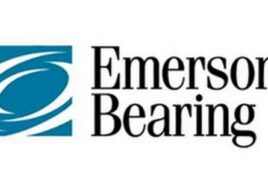By Andrew Lechner, Product Manager, R+W America
Flexible couplings are designed to absorb structural design problems, but are often taken for granted and selected after everything else has been put in place. Depending on design requirements though, trade-offs are often necessary. Here are tips on how to handle those trade-offs.

Elastomer insert couplings suit applications that do not require high positional accuracy. Benefits include vibration damping and high torque density. Different insert materials are available, with varying degrees of stiffness, chemical compatibility and thermal stability to help balance trade-offs between compact couplings with high torque and temperature ratings against couplings with strong misalignment capacity and vibration damping characteristics.
The selection of a flexible shaft coupling seems to be one of the easiest tasks associated with mechanical design. Couplings are often viewed as commodities, easily saved until the last minute, after the larger design requirements have been met. But sooner or later couplings come to the forefront, with performance problems, dimensional constraints, and product availability potentially causing enough trouble to hold up the design. Fortunately there is a wider variety of these components available on the market than you may realize, allowing you to balance some of the many trade-offs associated with flexible coupling selection.
The first questions to ask pertain to the larger task at hand. Is the design intended to be a highly accurate motion system? Is it a highly dynamic application requiring frequent acceleration and deceleration, and at what rate? Is extremely smooth running or balance for high speed important? Or are the performance requirements relatively mild, requiring low speed, infrequent accelerations, and no need to hold position—making cost and availability the driving factors? Since these conditions affect the selection of almost all motion system components, they should be addressed and understood well before the coupling is selected, and will help to narrow the field before getting into the details.
Elastomer insert couplings are generally used when positional accuracy is less critical and the application does not require a high number of acceleration cycles. They offer the benefits of vibration damping and high torque density, and are normally available at a reduced cost and lead-time.

Different types of insert materials are available, with varying degrees of stiffness, chemical compatibility and thermal stability. Therefore you can balance trade-offs between compact couplings with high torque and temperature ratings against couplings with improved misalignment capacity and vibration damping characteristics.
Torsionally rigid metallic couplings are generally well suited to systems requiring highly accurate positioning, high speed, or fast acceleration and deceleration. Flexible couplings almost always possess the least torsional stiffness of any component in a direct drive motion system, which makes them the weakest link when it comes to system stiffness.
With torsionally rigid couplings, settling times are reduced, allowing a motion system to stabilize between velocity changes at a faster rate than if it had less stiff counterparts. Faster settling helps to avoid losses in position accuracy and reduces severe oscillation in highly dynamic motion systems.
Stiff, but not stiff
More generally there are some basic rules regarding coupling performance trade-offs, which apply with few exceptions. Most pertain to flexibility and stiffness. Since flexible couplings, by definition, are not very stiff in the lateral and angular directions, but must possess either resilience or stiffness in the rotational direction, achieving perfect coupling design can be difficult. In short, most couplings must be stiff but not stiff. The better the alignment between shafts, the more selective one can be in terms of the other key performance attributes.
Different types of machine axis layouts come with different practical expectations for shaft alignment. In a case where the two drive components being coupled will be mounted on a common bracket (such as a motor and ball screw slide), accurate shaft alignment simply depends upon the quality of the bracket and is generally simple to achieve. In a case where the two drive components will be mounted on separate bearing surfaces (such as a gearbox and roller shaft), there is little in place to guide the components into alignment, and shaft alignment must be performed manually. Depending on the degree of accuracy necessary, laser alignment tools, dial indicators, or simple straight edges are used; though visual alignment with a straight edge is almost never advisable.
After you have determined the most realistic expectations for shaft alignment, select flexible couplings that compensate for remaining inaccuracies. When evaluating coupling designs that handle most of the performance requirements but not enough misalignment, increased lateral flexibility can be found in a few different ways.
When possible, continuous elongation of a single flexible element will balance detriments to torsional stiffness and physical size, but with only marginal improvement to misalignment capacity. Essentially the entire flexible portion has a greater distance over which to compensate for an offset between shafts, meaning that the bending stress placed on any one section of coupling can be held constant. What this also means is that the torsional spring rate of the coupling decreases at the same time as the lateral spring rate. If the ideal coupling for the application comes very close to meeting the performance requirements, but a small amount of additional flexibility is deemed necessary, a coupling that is only slightly longer may be all that is necessary.

The use of a spacer between two single flexible elements results in the greatest increase in misalignment capacity with potentially the least impact on torsional stiffness – but it also costs the most space. Intermediate spacers are generally fabricated from solid metal tubing with a relatively high torsional stiffness, and the spring rates of the individual flexible elements do not necessarily need to change. While doubling up on two of the same flexible elements would mean a reduction to slightly less than half the overall torsional stiffness, it is often possible to change the individual elements to something more stiff, mitigating the losses. The fixed angular misalignment tolerance of each flexible element is then considered, with a greater distance between their centers translating into a greater capacity to handle shaft offset. This works in most cases, since angular misalignment is normally limited, assuming that the machine will be kept more or less level. But be prepared for the overall length of the coupling to grow by 50% at the very least, and for speed ratings to drop as overall length increases.

Softening of a flexible element, which would make sense with elastomer insert type couplings, increases misalignment capacity but significantly reduces both torque and torsional stiffness ratings. The concept is simple. A softer flexible element compresses more easily, compensating for more misalignment between two fixed hubs, but also twisting by a larger amount under torsional load. This action in turn reduces maximum torque ratings, meaning that a larger physical size must be used in general to compensate for more misalignment while holding torque ratings steady. In cases where smooth running is the primary objective, soft elastomer inserts can be a great way to damp vibration while handling slightly greater misalignment. But in turn they cannot be expected to handle large torque values relative to their size as with harder inserts, or to maintain a high level of positional accuracy.

While misalignment ratings are by no means the only basis for coupling selection, they refer to the very purpose of flexible shaft couplings. Generally speaking, the more critical an application is in terms of precision, speed or torque density, the more important shaft alignment becomes, since most couplings are asked to be stiff but not stiff at the same time. In spite of the tremendous variety of coupling designs available, the following table applies to the majority of situations, and can be used as a general guideline when weighing coupling options.
Flexible couplings are intended to absorb structural design problems, and have been designed and redesigned to that end over the decades. For this reason they are often taken for granted and it can be easy to assume that selection will be an easy feat, performed after everything else has been put in place. Depending on the requirements of any machine design, however, trade-offs are often necessary. The ability to be flexible in your expectations of coupling flexibility can be one of the keys to getting the performance, cost and lead-time you need for success.
Discuss this on The Engineering Exchange:
R+W America
www.rw-america.com
::Design World::
Filed Under: Couplings, MECHANICAL POWER TRANSMISSION





Tell Us What You Think!